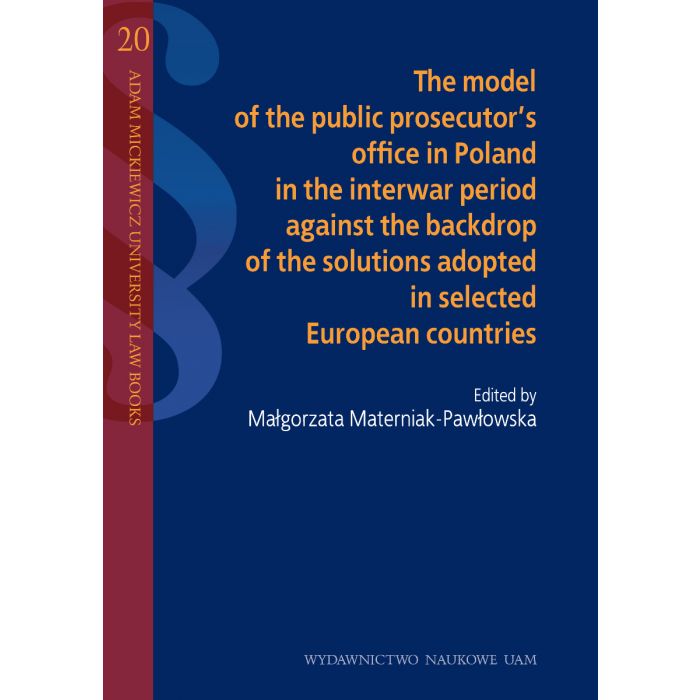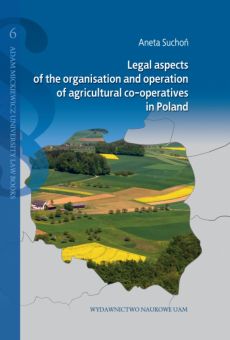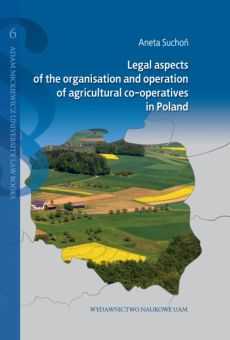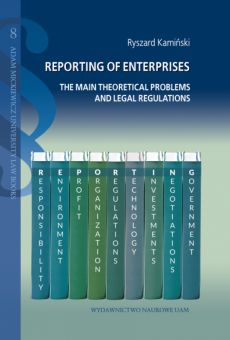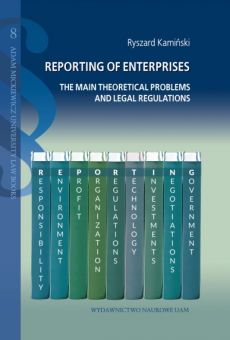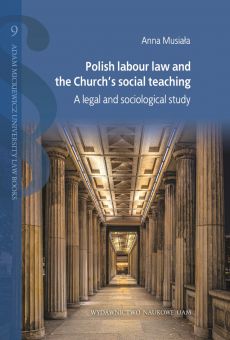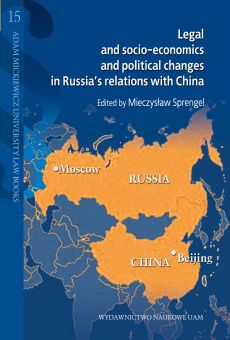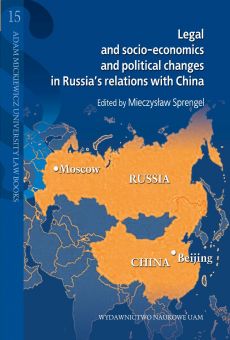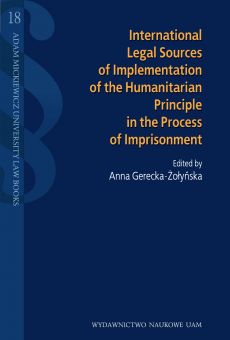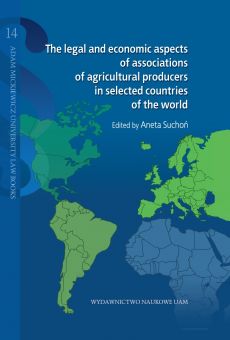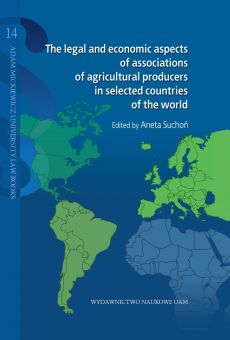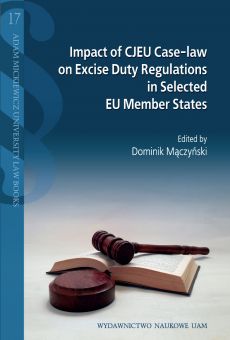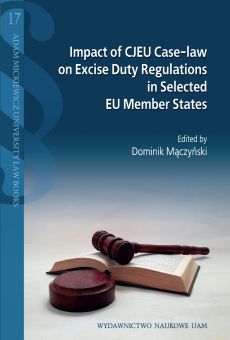The model of the public prosecutor's office in Poland in the interwar period against the backdrop of the solutions adopted in selected European countries (PDF)
- In Stock: in stock
- ISBN: 978-83-232-4157-7 (PDF)
- DOI: 10.14746/amup.9788323241577
- Category: Law, E-books, Adam Mickiewicz University Law Books
- Year of publication: 2023
The monograph describes the model of the system of the Polish public prosecutor's office in the interwar period, including its position in the system of justice system bodies and its place in the system of state bodies in general, as well as the legal basis of its functioning and the most important organizational principles. This model is presented against the backdrop of different European solutions from this period, namely the German, French, and Czechoslovakian ones.
It is the first work in Polish to deal with this issue in a comprehensive and comparative manner in the history of Polish historical and legal bibliography.
Introduction (Małgorzata Materniak-Pawłowska)
Acknowledgments
Notes on Contributors
CHAPTER 1
The Public Prosecutor’s Office in Germany in the interwar period (1918-1939) (Georg Jaster)
1.1.. Introduction
1.2.. The beginnings of the public prosecutor’s office in Germany
1.3.. The organization and remit of the public prosecutor’s office in Germany in the Weimar Republic period between 1919 and 1933
1.4.. The public prosecutor’s office in Germany in the period of the Third Reich
1.5.. Conclusions
CHAPTER 2
The Public Prosecutor’s Office in France between the two world wars (1918-1939) (Laura Andriamanjato)
2.1.. The legal basis of the prosecution system
2.1.1.. Constitutional regulations
2.1.2.. Legal provisions
2.1.3.. Acts of execution: regulations, decrees and others
2.1.4.. Internal rules of procedure for public prosecutors’ offices
2.2.. The location of the public prosecutor’s office in the system of state authorities (according to the tasks/competences imposed on the public prosecutor’s office by the applicable legal regulations and the legal system in force)
2.3.. Organizational principles of the Public Prosecutor’s Office
2.3.1.. Uniformity
2.3.2.. Hierarchical subordination
2.4.. The tasks and competences of the public prosecutor resulting from the adopted model of public prosecution
VI Table of contents
2.4.1.. Within the framework of the investigation
2.4.2.. In criminal proceedings
2.4.3.. In civil proceedings
2.5.. The status of prosecutor
2.5.1.. Conditions of appointment (including the model of preparation for the profession of prosecutor - candidacy)
2.5.2.. Rights and duties of the public prosecutor
2.5.3.. Disciplinary responsibility
2.6.. Evaluation of the model of the public prosecutor’s office – theoretical assumptions, as well as its actual activity, degree of politicization of the public prosecutor’s office
CHAPTER 3
Model of the Public Prosecution Office in the Czechoslovak republic between 1918 and 1938 (Marián Byszowiec, Vilém Knoll)
3.1.. Constitutional establishment and status of the Public Prosecutor’s Office in the system of state bodies
3.2.. The Public Prosecutor ‘s Office for the Czech and Moravian-Silesian Region – characteristics of the Public Prosecutor’ s Office
3.3.. The system of the Public Prosecutor’s Office
3.4.. Powers of the Public Prosecutor’s Office
3.5.. Appointment and dismissal of Public Prosecutors, disciplinary proceedings
3.6.. Principles of organization and functioning of the Public Prosecutor’s Office
3.7.. The relationship of the Public Prosecutor to the court and other bodies
3.7.1.. The relationship of the Public Prosecutor to the court
3.7.2.. The relationship of the Public Prosecutor to other bodies
3.7.3.. Private plaintiffs
3.8.. Exclusion of the Public Prosecutor
3.9.. The position of the Public Prosecutor in the preparatory proceedings
3.9.1.. Preparatory search
3.9.2.. Preparatory investigation
3.9.3.. Filing an indictment file (indictment)
3.10..The position of the Public Prosecutor in court proceedings
3.10.1..Indictment proceedings
3.10.2..Main trial
3.10.3..Corrective proceedings
3.10.4..Pardon
3.11..Execution of the sentence
3.12..The position of the Public Prosecutor in proceedings in civil matters
3.13..Public Prosecutor’s Office in Slovakia and Carpathian Ruthenia
3.14..Military Prosecutor’s Office
3.15..Financial Prosecutor’s Office
3.16..Conclusion
CHAPTER 4
The Public Prosecutor’s Office in the Second Polish Republic. The sources of law and system (Małgorzata Materniak-Pawłowska, Grzegorz Smyk)
4.1.. The Public Prosecutor’s Office in the Second Polish Republic – general remarks
4.2.. The public prosecutor’s office between 1918 and 1928
4.2.1.. Introductory remarks
4.2.2.. The legal basis and the system of the public prosecutor’s office between 1918 and 1928
4.3.. The public prosecutor’s office between 1929 and 1939
4.3.1.. Introductory remarks
4.3.2.. The legal bases and the system of the public prosecutor’s office between 1929 and 1939
Conclusions (Małgorzata Materniak-Pawłowska)
| Detailed information | |
|---|---|
| Introduction |
Download file

|
| Contents |
Download file

|
| Conclusion |
Download file

|
|
|
|
| Publication Version | e-book |
| Language | English |
| Title (EN) | The model of the public prosecutor's office in Poland in the interwar period against the backdrop of the solutions adopted in selected European countries |
| Type of publication | Monograph |
| Edition | I |
| Series | Adam Mickiewicz Univercity Law Books no. 20 |
| ISBN | 978-83-232-4157-7 (PDF) |
| DOI | 10.14746/amup.9788323241577 |
| Number of pages | 138 |
| Number of publishing sheets | 10,00 |
